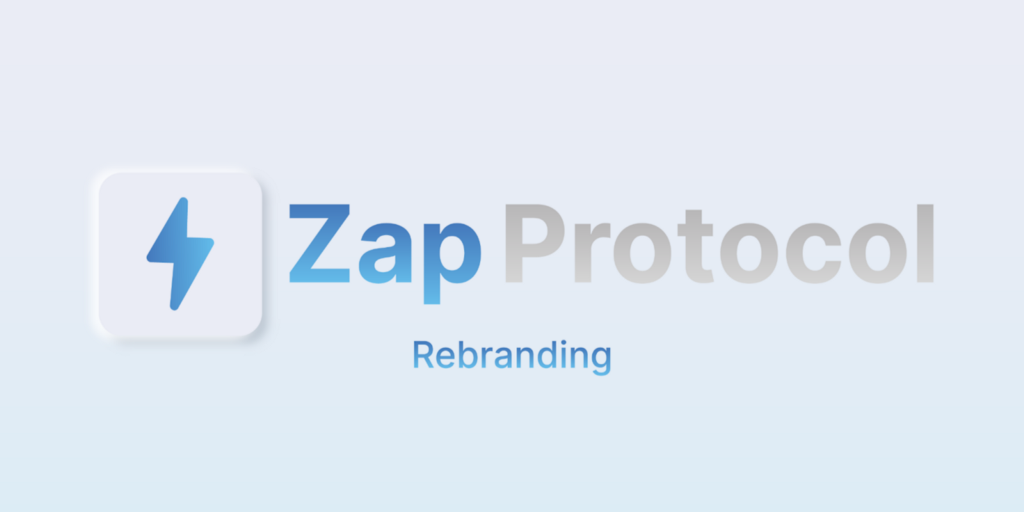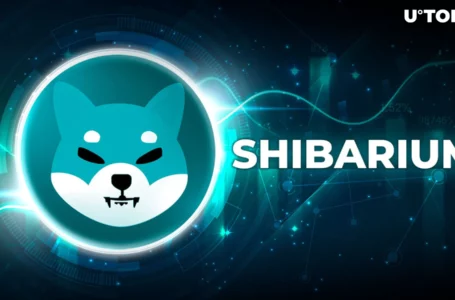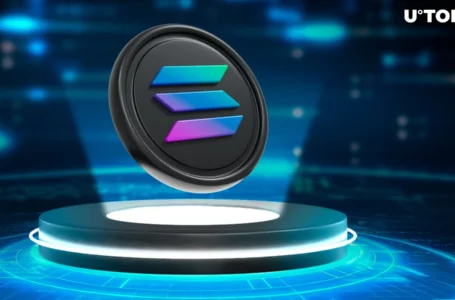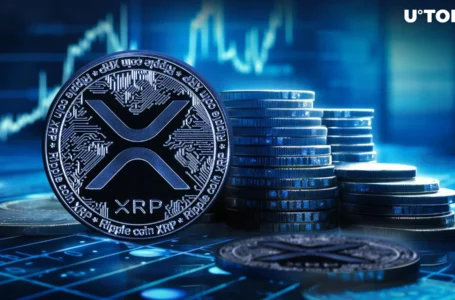
The Zap Protocol (ZAP) operates as a decentralized infrastructure provider and cryptocurrency. The network combines a variety of useful features to simplify the creation and integration of smart contracts. The protocol incorporates a DEX, NFT launchpad, and data feeds in a unique manner. The goal of the project is to reduce the friction encountered by Dapp developers when integrating external data in blockchain-based smart contracts.
What Problems Does the Zap Protocol (ZAP) Solve?
There are a lot of issues that the Zap Protocol helps to alleviate. Primarily, the platform’s oracle marketplace helps to reduce centralization and technical restrictions slowing large-scale blockchain adoption. Today’s smart contracts can handle advanced functionalities which incorporate real-world data. In this way, they enable a new level of efficiency across multiple industries.
The Zap Protocol (ZAP) provides an open platform for creating, sharing, and monetizing deterministic oracles from data feeds. This data originates from off-chain sensors known as oracles. For example, you could set up an oracle to monitor exchange rates, sports scores, IoT sensor data, and much more.
Oracles can send and receive data and trigger smart contracts on the blockchain. However, because these sensors are often centralized source feeds, they reduce the decentralization of the entire network. Consequently, whenever an oracle provides slow or incorrect data, it can affect the validity of the blockchain. Recognizing these shortcomings, the Zap Protocol enables developers to create Ðapps that incorporate outside data via decentralized oracles in a more streamlined manner.
Ethereum Scaling Issues
The Zap protocol serves a vital role as a layer 2 solution. Its unique technical structure alleviates Ethereum congestion and lowers Gas fees. Second layer protocols are common in the market today. They function by removing some aspect of a transaction from the blockchain.
Network Data Delays
Delays in oracle data transmission can limit developer’s capabilities. The Zap Protocol is structured to provide seamless access to oracle data across an excellent selection of use cases. As such, the platform has a disruptive potential across a wide range of global industries, including finance, insurance, real estate, and shipping.
Benefits of the Zap Protocol (ZAP)
The Zap Protocol also provides a number of benefits that make it ideal for developers For one, the platform is a multifunctional blockchain solution for a wide range of applications. The network offers tokenizing services, low fees, secure transactions, and earning opportunities.
Flexibility
Dapp developers enjoy a high level of flexibility when operating within the Zap Protocol ecosystem. The open nature of the marketplace ensures that there is always an excellent selection of oracles available. Notably, developers even encourage the creation of duplicate oracles. This strategy enables the network to provide more reliable multi-sourced data feeds.
ROI Potential
The Zap Protocol (ZAP) was built with a goal to incentivizes oracle creation. Anyone can become a data provider on the network. Data providers are incentivized to publish secure data feeds from a variety of endpoints. This strategy provides new monetization opportunities for individuals and emerging economies.
Interestingly, data streams are monetized via resource-specific bonding markets. Zap was one of the first platforms to integrate bonding curves into the smart contract equation. A bonding curve is simply a mathematical concept that is used to describe the relationship between price and the supply of an asset.
How Does the Zap Protocol (ZAP) Work?
The Zap Protocol lives on the Ethereum network. The developers created it as a second layer that could simplify Ethereum smart contract creation and oracle integration. As such, Zap Protocol developers gain access to advanced features such as the ability to set bonded pricing curves.
Zap Oracle Marketplace
The Zap Oracle Marketplace is where users can create and access oracles with ease. The platform operates as a prediction market for data. It provides instant access to oraclized data feeds from across the globe. Notably, anyone can create, list, and sell, data feeds on this open market.
Oracle Network
The oracle network is comprised of Zap Protocol data feeds. Keenly, the project’s developers seek to operate a robust, source agnostic data-sharing platform to empower the next generation of Dapp developers. To accomplish these tasks, the developers removed all of the technical barriers related to oracle integration.
Starting an Oracle
The first step in creating a new Zap Protocol oracle is for both the provider and subscriber to bond their ZAP. This process is similar to staking in that you will lock your tokens up in an individual oracle. Once the oracle is bonded, the provider and subscriber will then gain control over an oracle-specific integer value known as Dots.
The amount of ZAP necessary to bond to produce one Dot is determined by a price/supply curve. Notably, one dot is equal to one query to its respective oracle. This information is delineated by the data provider during oracle creation.
Subscribers
Data feed subscribers must stake ZAP tokens to data providers in exchange for data-provider-specific access tokens. This task is done by bonding Zap to the desired oracle which then redeems a quantity of Dots. Subscribers must also select the conditions upon which they will receive data and provide an IPFS key pair for encrypted peer-to-peer communications to subscribe.
NFT Marketplace
Zap Protocol users can create non-fungible tokens using the NFT marketplace. The NFT marketplace provides users with a place to buy, sell, and trade their creations. Content creators, artists, influencers, athletes, and celebrities can utilize this platform to connect with their fans in new and exciting ways.
NFTs differ from regular cryptocurrencies in that they represent a unique asset. As such, their value isn’t determined by their market cap. Instead, factors such as scarcity and personal demand dictate the value of these tokens. This unique pricing structure has led to NFTs selling for millions of dollars. Consequently, NFTs are one of the fastest-growing sectors in the blockchain industry.
DEX
The Zap DEX (decentralized exchange) enables users to trade ERC-20 tokens securely. The Zap DEX provides fast transaction times and low fees when compared to centralized platforms like Coinbase or Binance. Best of all, the DEX is non-custodial. This designation means that your coins remain safely stored in your wallet until they are traded in a peer-to-peer transaction with the other party.
Non-custodial exchange users never have to worry about not having access to their tokens. There is no centralized organization to lock you out of your account, block trades, or confiscate your assets. The entire DEX operates as pure code. In this way, it remains free from human error.
Zap Development Tools
The Zap Development tools are designed to streamline the creation of monetizable, encrypted peer-to-peer data feed subscriptions. These tools remove the technical barriers associated with integrating data feeds into oracles for use in smart contracts. This section also features extensive documentation, tutorials, and other helpful tips to get your project off the ground.
ZAP
ZAP is the main utility and governance token of the network. ZAP is an ERC-20 token. As such, it resides on the Ethereum blockchain. As an ERC-20 token, ZAP users are privy to significant interoperability within the market. You can trade ZAP on any ERC-20 compliant exchange.
ZAP is listed on a variety of centralized platforms which has helped to deepen the liquidity of the token. Users must hold ZAP to interact with the Zap Protocols features and DEX. The total supply of ZAP is capped at 520,000,000 tokens. There is currently 236,144,465.00 ZAP in circulation.
Community Governance
Another cool aspect of the Zap Protocol is its focus on community. This quarter will see the platform integrate its community governance mechanisms. Once the contracts and Treasury are transferred to governance token holders, the community will gain the ability to vote on all vital upgrades. These upgrades can include anything from coding alterations to changing the fee structure of the network. Community governance systems are gaining in popularity because they ensure that only those that are invested in the network get a say in its development.
History of the Zap Protocol (ZAP)
The Zap Protocol launched in May 2017 and is based out of Switzerland. The platform was co-founded by Benjamin Young, Nick Allen, and Nick Spanos. The network has seen considerable growth since its launch date. Notably, the platform secured $7 million in funding to start the project. Over $2 million came from an ICO held from Oct 20 – Nov 20, 2017.
Final Thought
The Zap Protocol is positioned excellently in the market at this time. The current record high Ethereum congestion has led to gas fees skyrocketing. The Zap protocol enables users to avoid these fees and still benefit from the overall security of the Ethereum blockchain. As such, the Zap Protocol should see continued adoption as more features and services go live.



















